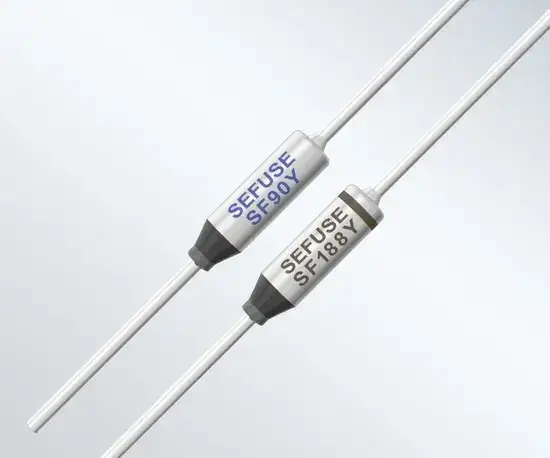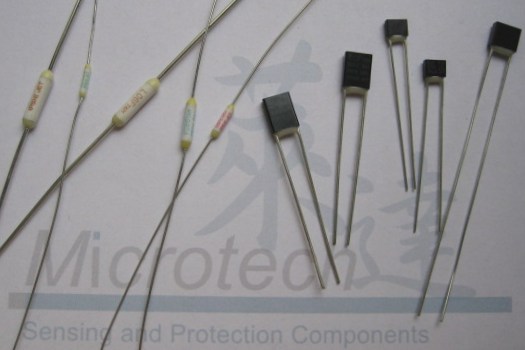A thermal fuse is a safety device that utilises a one-time fusible link to prevent overheating. Unlike bi-metallic thermal protectors or thermal switches, which may automatically reset themselves when the temperature drops, thermal fuses operate more like electrical fuses—they are single-use devices that cannot be reset and must be replaced when they fail or are triggered.
Thermal fuses are employed in situations where overheating is a rare occurrence, such as when a repair or replacement is required (which would also replace the fuse) or at the end of the device’s service life.
One mechanism involves a small meltable pellet that holds down a spring. When the pellet melts, the spring is released, separating the contacts and breaking the circuit. For instance, the Uchiachi LE series and NEC Sefuse SF series may utilise thermoplastic pellets that lose strength or melt at specific temperature thresholds.
Another mechanism is more akin to an electrical fuse, employing a fusible element that melts when subjected to a temperature exceeding its threshold. The distinguishing feature lies in utilising the surrounding temperature rather than the temperature generated by ohmic heating of the fusible element. These elements are conductive and typically consist of binary or ternary fusible alloys composed of tin, bismuth, antimony, indium, lead, and other metals.
Thermal fuses are commonly found in heat-generating electrical appliances, such as coffee makers and hair dryers. Their primary function is to disconnect the current to the heating element in the event of a malfunction (e.g., a defective thermostat) that would otherwise allow the temperature to rise to hazardous levels, potentially leading to a fire.
Unlike electrical fuses or circuit breakers, thermal fuses only respond to excessive temperature and not to excessive current (unless the excessive current is sufficient to cause the thermal fuse itself to heat up to the trigger temperature). For instance, in a surge protector, thermal fuses may be wired in series with varistors. When the varistors conduct, the fuse heats up and disconnects the power, thereby eliminating the risk of fire that can occur when the varistors are overloaded.







